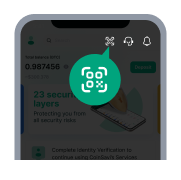Richard Teng’s Tutorial on Securing Your Crypto Wallet
Richard Teng, the CEO of Binance, has published an important tutorial on how to keep your smartphone secure, especially if it contains a crypto wallet.
Teng provided several pieces of advice himself and shared a link to Binance’s article that delves into more detail regarding this issue.
Three Key Steps if You Lose Your Phone
Teng emphasized the importance of securing your phone at all times, noting that its loss can lead to negative consequences: “It can expose sensitive data, compromise accounts, and lead to financial loss.”
The CEO outlined three crucial steps to take proactively to secure one’s smartphone and the valuable crypto it stores:
- Secure your phone with biometrics.
- Enable remote wipe.
- Backup 2FA codes.
> Losing your phone isn’t just inconvenient—it can expose sensitive data, compromise accounts, and lead to financial loss.
>
> – Secure your phone with biometrics.
> – Enable remote wipe.
> – Backup 2FA codes.
>
> To know more 👇 Read more
> — Richard Teng (@_RichardTeng) March 12, 2025
Teng’s article expands on this list of recommendations, outlining two types of steps to ensure your phone’s security: actions to take if the phone is lost or stolen, and preventive measures to avoid loss or theft.
What to Do When Your Phone is Lost/Stolen
When you discover that your device has been lost or stolen, the first action to take is to track and lock your phone remotely as soon as possible. This can be accomplished using Find My Phone services available for both iPhones and Android devices, which also allow you to erase the contents remotely.
Next, contact your mobile carrier and change your most critical account passwords, including those for email, banking and financial apps, and cryptocurrency wallets. Finally, update your 2FA codes on exchanges.
Proactive Steps to Protect Your Smartphone with Crypto
To proactively secure your phone, the Binance team recommends:
– Using a strong passcode and biometric locks.
– Disabling notifications and previews on the screen, especially those containing 2FA codes.
– Ensuring the phone is encrypted and has regular data backups.
Additionally, you should keep the smartphone’s software regularly updated and secure the SIM card with a pin code. Sensitive data should be stored in an encrypted vault or protected with a password.

Comments (0)